There is not a guitar-nerd amongst us whose ears do not perk up upon hearing the mellifluous flurry that is, my personal favorite type of wanking; sweep arpeggios!
In this video I go through every inversion on string-set G-B-E. Knowing these different shapes will help you utilize the technique in different keys, songs and musical settings rather than having one go-to sweep lick that you bust out occasionally - when the situation allows.
In Example 1, I begin with Root position E Minor (bars 1 and 2), then progress to 1st Inversion (bars 3 and 4), and finally 2nd Inversion. It is beneficial to practice all Inversions, as well as all Tonalities and Keys. In doing so we reinforce the technique, the shapes of the inversions and perhaps most importantly - we get a sense of what finger stretches work for us, in different places on the fretboard.
Consider this; the frets are closer together the further you go up the neck, making some stretches more accessible than others. If we were to play the same Root position Arpeggio in Ex. 1 in C Minor (on the 3rd fret), the stretch would be much bigger, and less accessible to players without freakishly long Buckethead-like fingers!
In order to gain a real-work command of sweeping you must be able to immediately find the inversion that works for you.
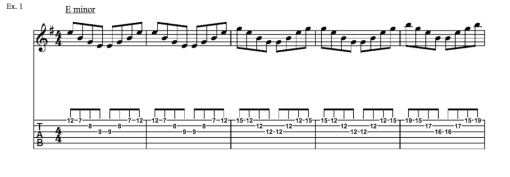
In Ex. 2 I play the same Root, 1st and 2nd Inversion sweep arpeggios in G Major. Practicing these sweep arpeggio inversions with a metronome, and Cycle 4/5 is a great way to hit all keys. You may begin each Key in Root position, or challenge yourself by playing the next closest inversion.
Cycle 4: C, F, Bb, Eb, Ab, Db, Gb, Cb
Cycle 5: C, G, D, A, E, B, F#, C#
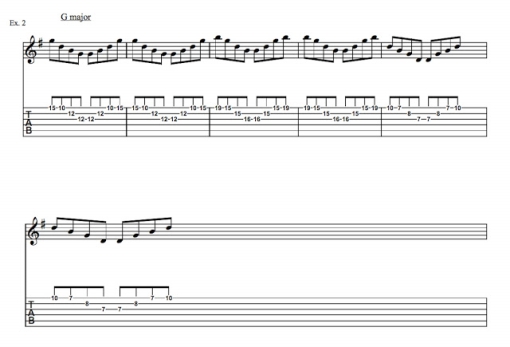
In Ex. 3 I play a comparatively accessible Diminished 7 Arpeggio idea. The Diminished Triad Inversions are not very comfortable to play. This Example sounds very similar, and is "Sort-of-Self-Inverting." 3 of the 4 notes from the Diminished 7th chord are repeated in each sweep arpeggio. Since the distance between all of the chord-tones is equidistant, (Minor 3rd) the shapes mirror one another. The same is true of Augmented chords, only the Triad is self inverting (all Major 3rds).
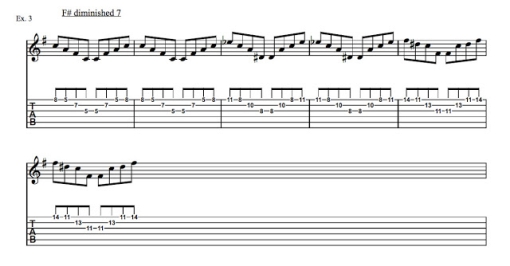
WHOLE TONE! This is a spacey favorite! Based off of the "Sort-of-Self-Inverting" diminished sweep in Ex. 3, this pattern is moved by Whole Step. You may also move the pattern up or down the neck by a Major 3rd, however I find it harder to sight that distance (4 frets) along one string.
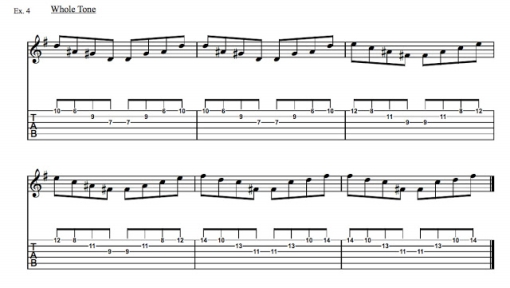
Once I began practicing these sweep basics with a metronome, and in Cycles. I began to own the technique, rather than simply having the 1 "stock" sweep arpeggio idea available. We can further reinforce the real-world relevance and practicality of the technique by practicing/sweeping arpeggios of the Diatonic Chords in Major or Minor Keys.
Another idea worth exploring is adding tensions, or Non-Chord Tones to these Inversions.
This and more will be covered in the follow-up Sweep Arpeggio Lesson.
Spread it, and shred it! The complete lesson follows:
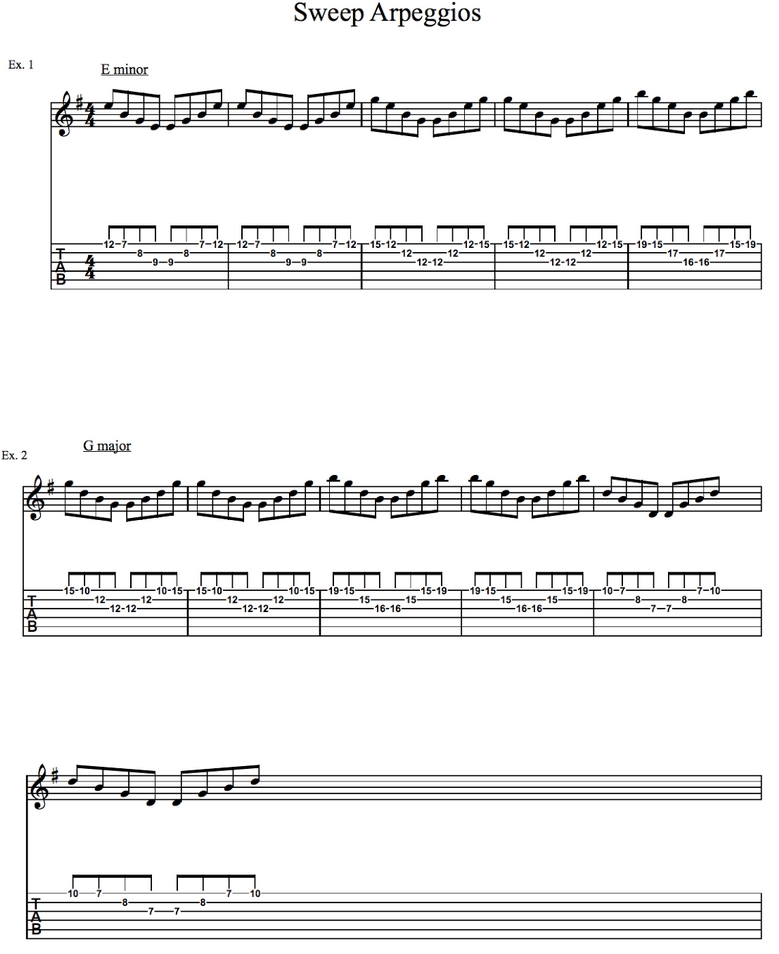

Chris Schreiner is a guitarist and award-winning instrumentalist whose project "drop.kick.pop" is a 21st century update of the 1960's mantra Sex, Drugs, Rock & Roll, and a guitar-centric take on electronica.